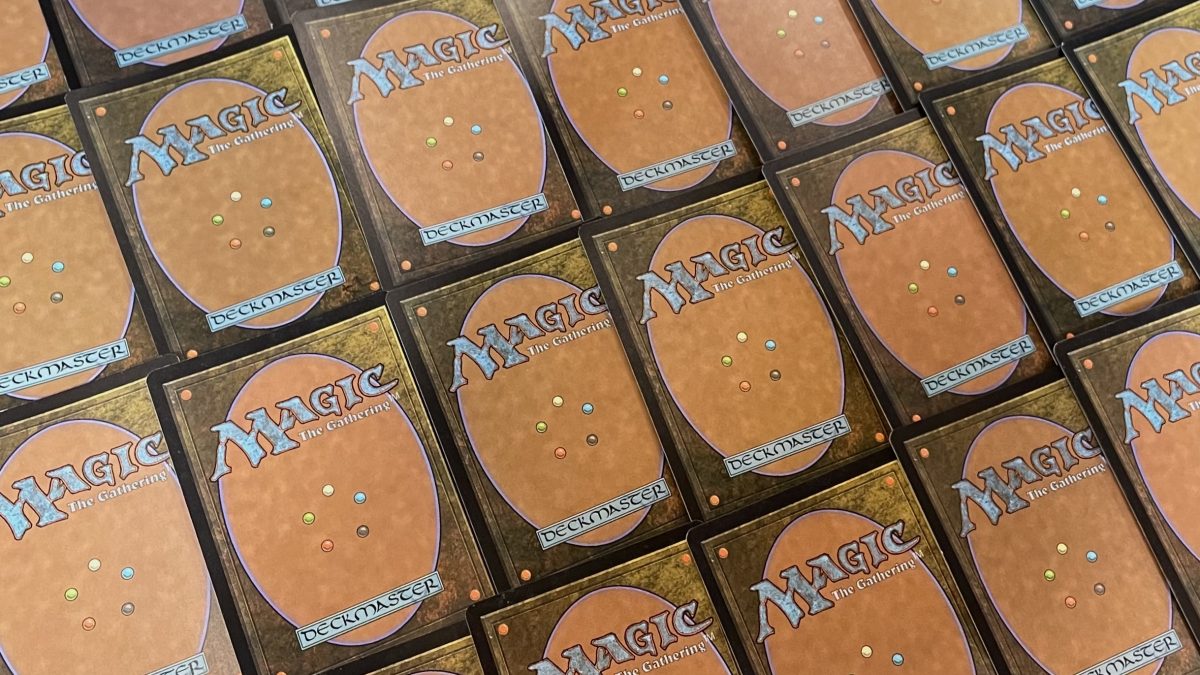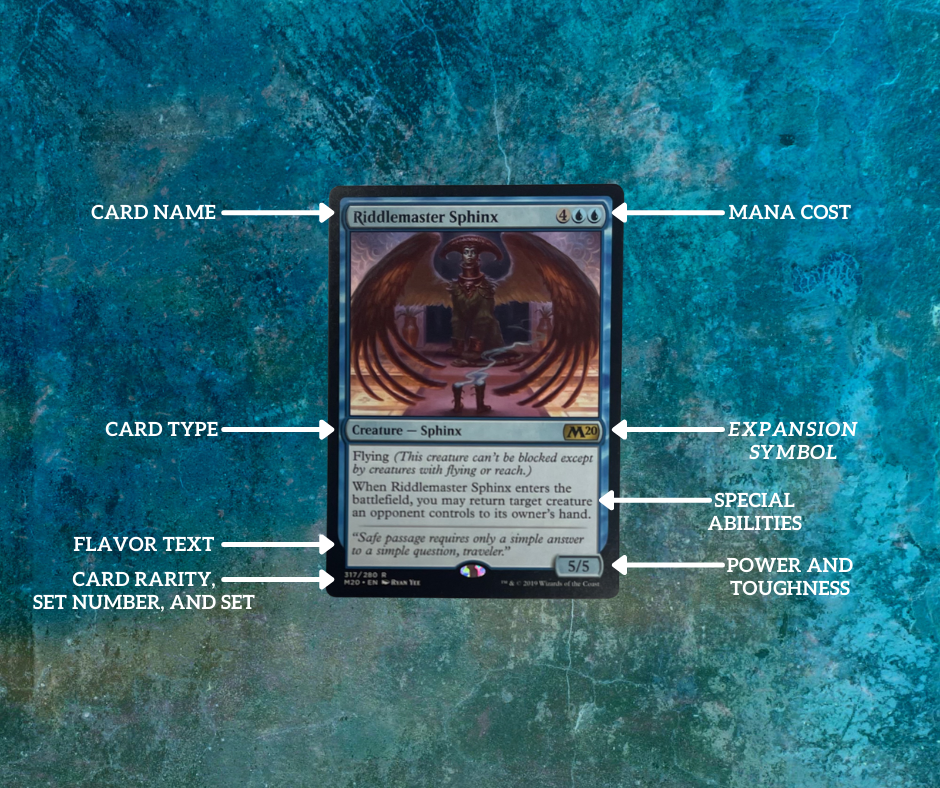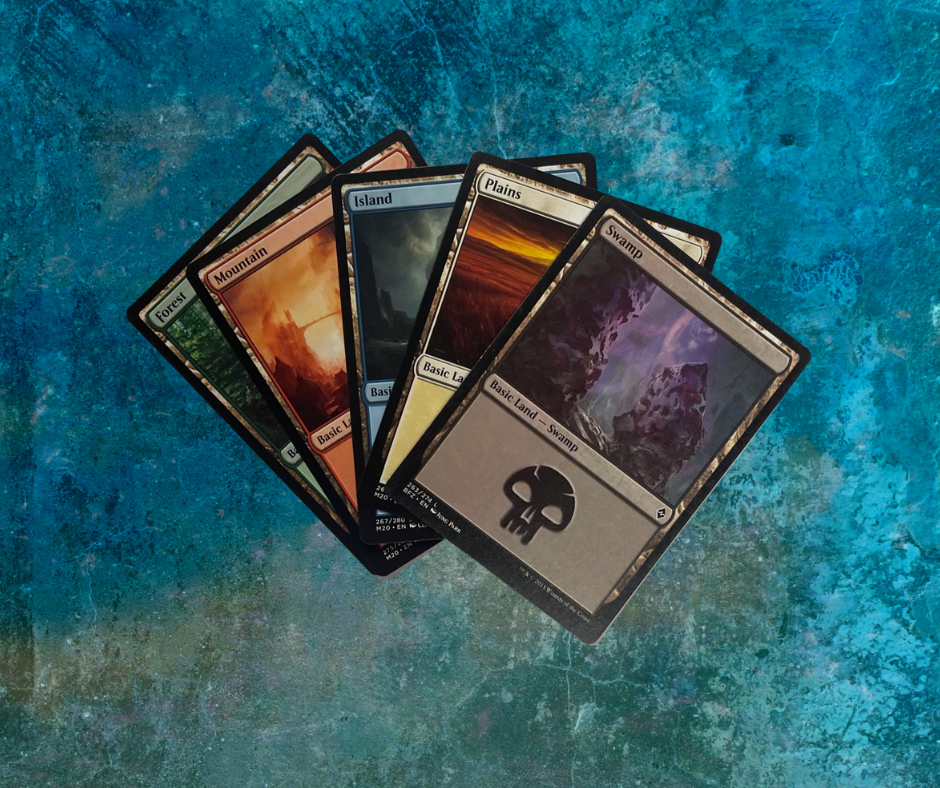Crash Course: Magic the Gathering
Welcome, wizard! Prepare your library, for we are about to embark on an epic and potentially devastating duel. This is the world of Magic the Gathering, a fantasy trading card game that is extremely competitive and highly strategic. As intimidating as learning a new game like MtG sounds, we are here to make it a little easier for you. Let’s dive right into our beginner guide to Magic the Gathering. First and foremost, we need to discuss the anatomy of a card.
The most important aspects of a card are the card type, power/toughness, special abilities, and mana cost.
Card types will indicate what kind of card you are going to play. Some cards will be creatures, artifacts, instants, and sorceries. Though there are many other types of cards you might come across, these are the most common. Creatures are your main fighting force. They will go into head-to-head combat with other creatures out on the playing field. Artifacts are items and other unique objects that do a number of useful things like adding more power or toughness to cards, summon other creatures, add other abilities to your cards, and more.
Instants and sorceries are unique in that they provide one-time effects when you play them. Sorceries can only be used during your turn and instants can be used during your turn or during an opponent’s. After playing an instant or sorcery, you must immediately put the card into your graveyard (or discard pile).
Every card in Magic the Gathering is different and most of them have special abilities that will heavily influence the game. These abilities sometimes can be activated for free, sometimes are activated when they first enter play or are discarded, and sometimes have a mana cost in order to activate them.
Mana cost refers to the amount of magic energy you need in order to play a card. There are five different types of mana including plains (white), swamps (black), islands (blue), mountains (red), and forests (green). In your turn, you are allowed to play one basic land card for free. These land cards will build up throughout the game and allow you to play bigger and better cards on future turns. You can use a land card’s mana energy by “tapping” the card once per turn. Tapping refers to turning a card slightly sideways to indicate you are using the effects on the card.

Power and Toughness are the roots of combat. Power (the leftmost number) indicates the amount of damage that card will deal with an opponent’s health total or a creature that the opponent controls. Toughness (the rightmost number) indicates the defense of that creature when blocking another creature’s attacks. Combat happens when an opponent wants to attack. The attacking player will decide which creatures of theirs will attack and the defending player gets to decide which creatures will block those attacks. The power and toughness between the attacking and defending creatures are compared and damage is dealt.

That’s the basics of Magic the Gathering. Of course, there is a lot more to learn about the game, like basic terms and definitions of certain abilities, but most of those are easy to pick up as you play your first game. Looking to get started playing this fantastic game? Stop by your local Bookmans and check out our extensive collection of Magic the Gathering cards, decks, and other accessories. Each store has welcoming and experienced MtG fans who would be happy to answer your questions.
Categories
- Art (13)
- Bookie Blog (440)
- Community Events (272)
- Contests & Giveaways (251)
- Core Values (197)
- Films (17)
- Games (46)
- gifts (33)
- In Our Stores (571)
- Inspiration (115)
- Job Postings (2)
- Merchandise (399)
- movie recommendastions (1)
- Musical Notes (243)
- News (176)
- Personality (4)
- Play: A Gamer's Blog (105)
- Quiz (16)
- Reel Chat (287)
- Style (22)
- Tips & tricks (46)
- Uncategorized (183)





